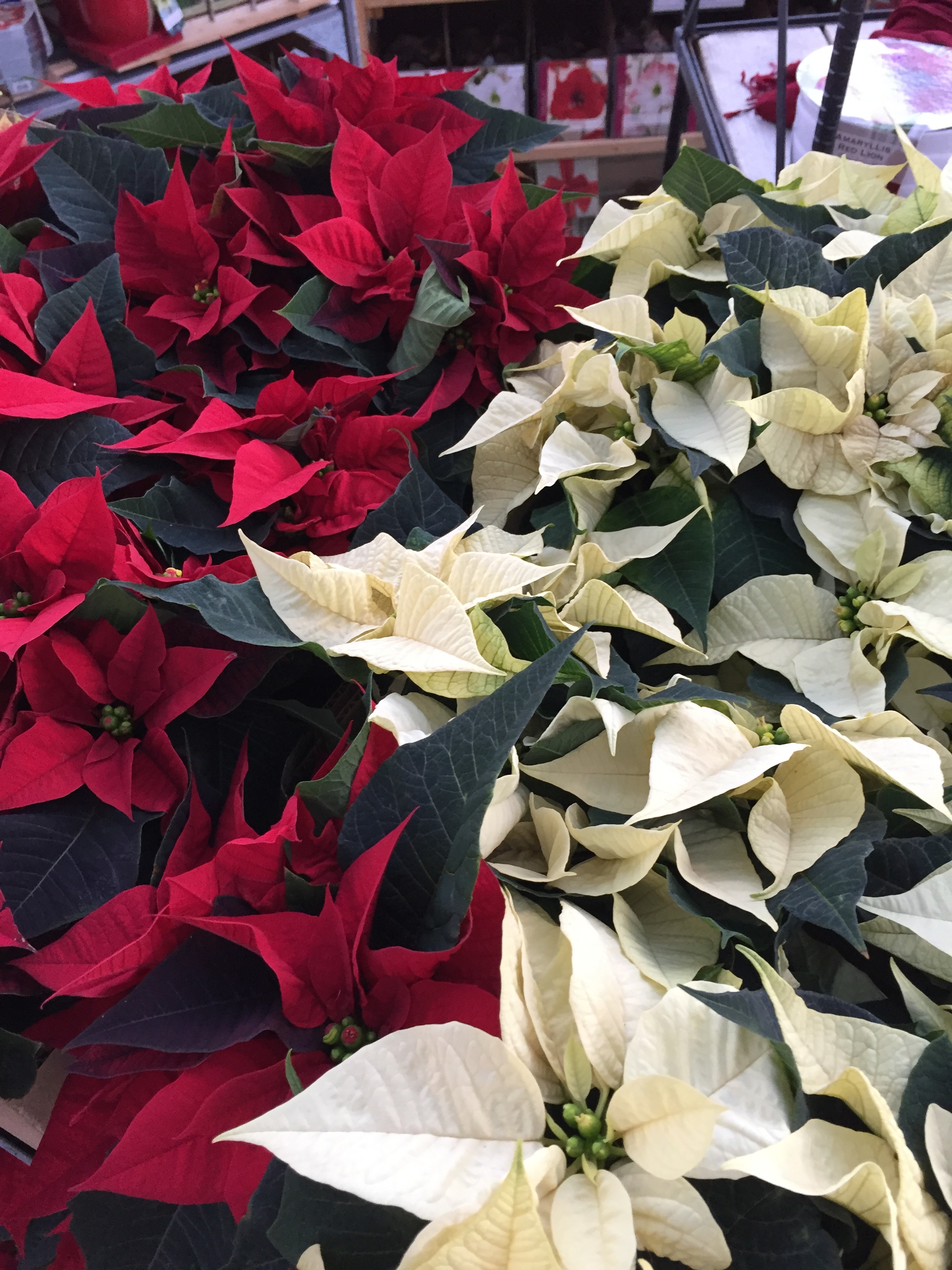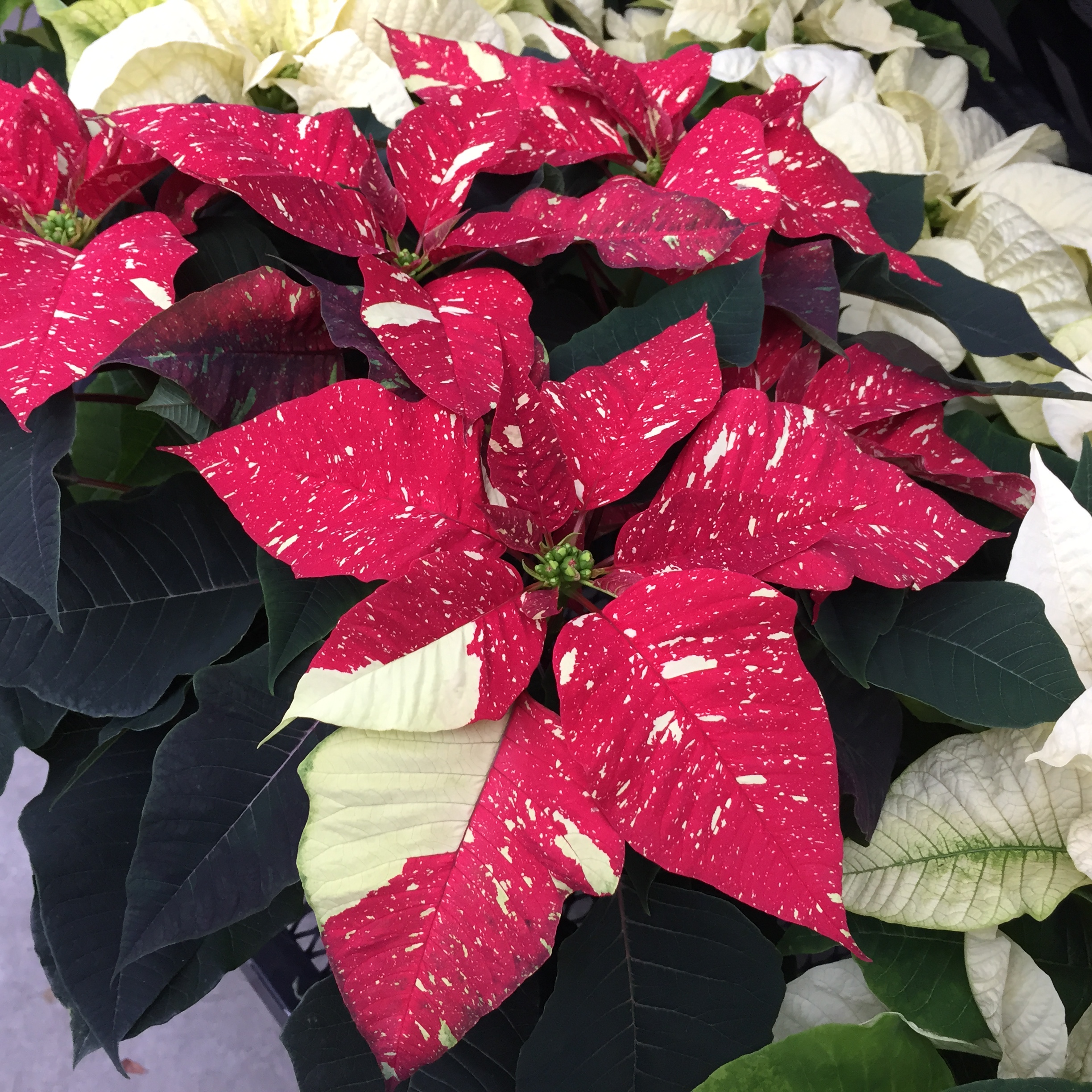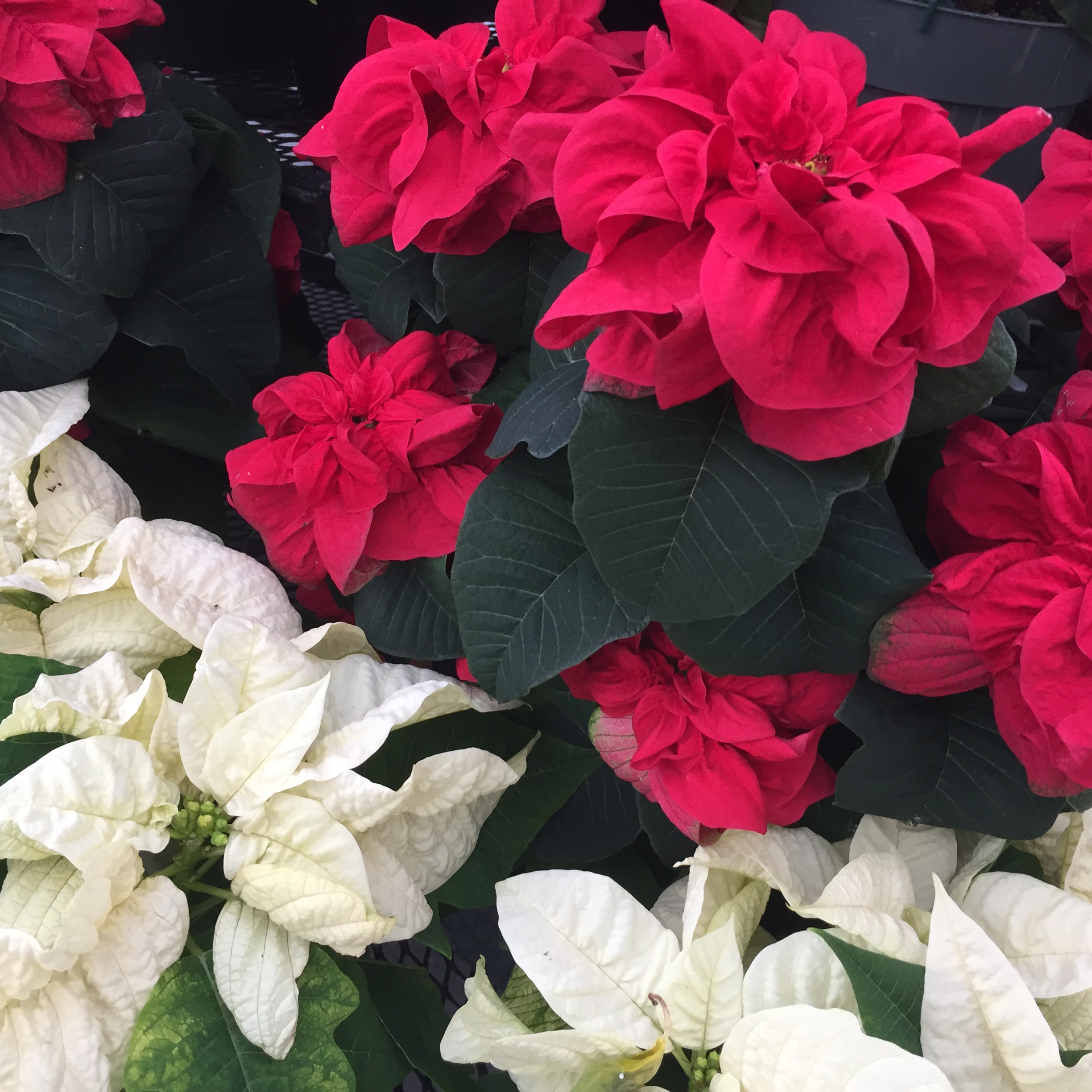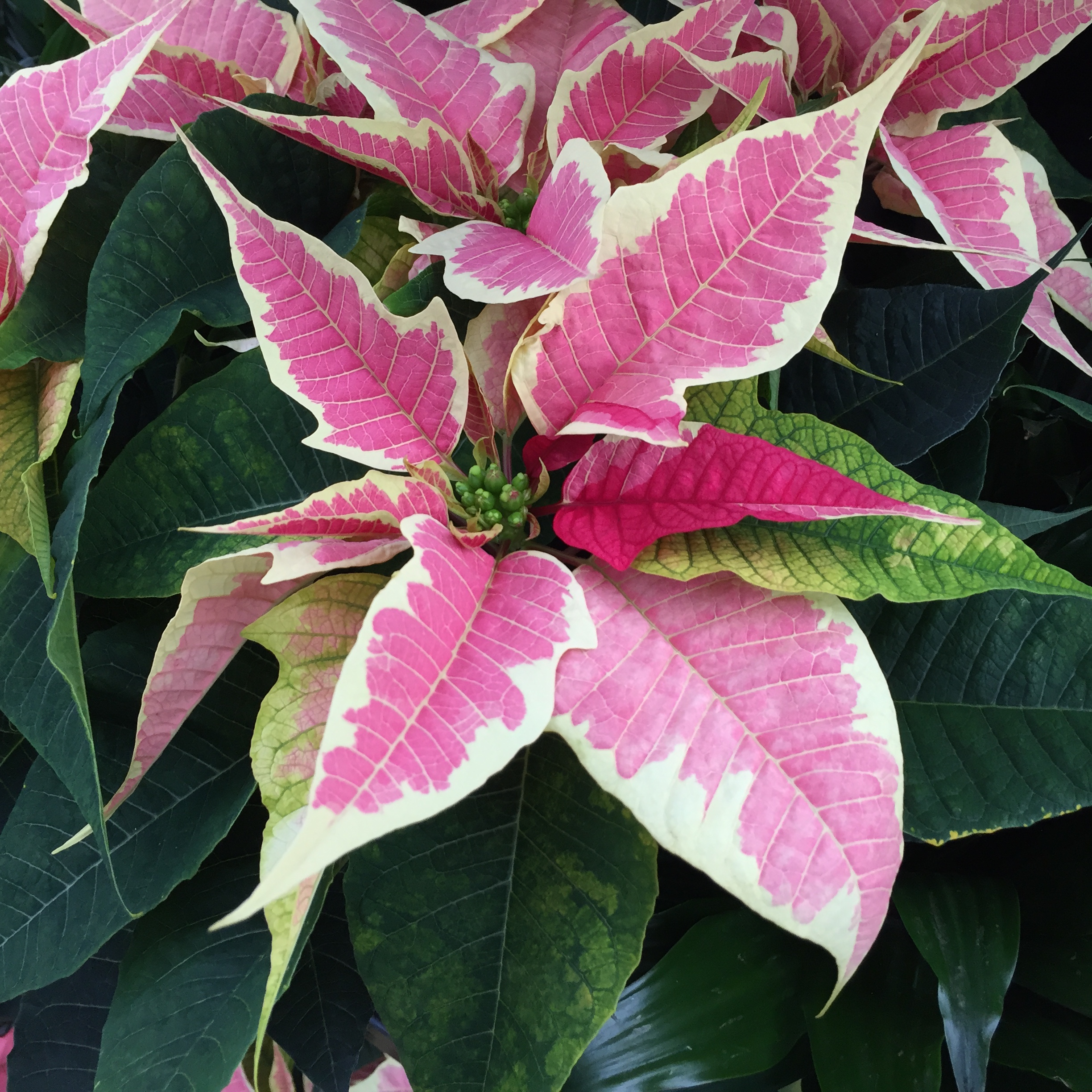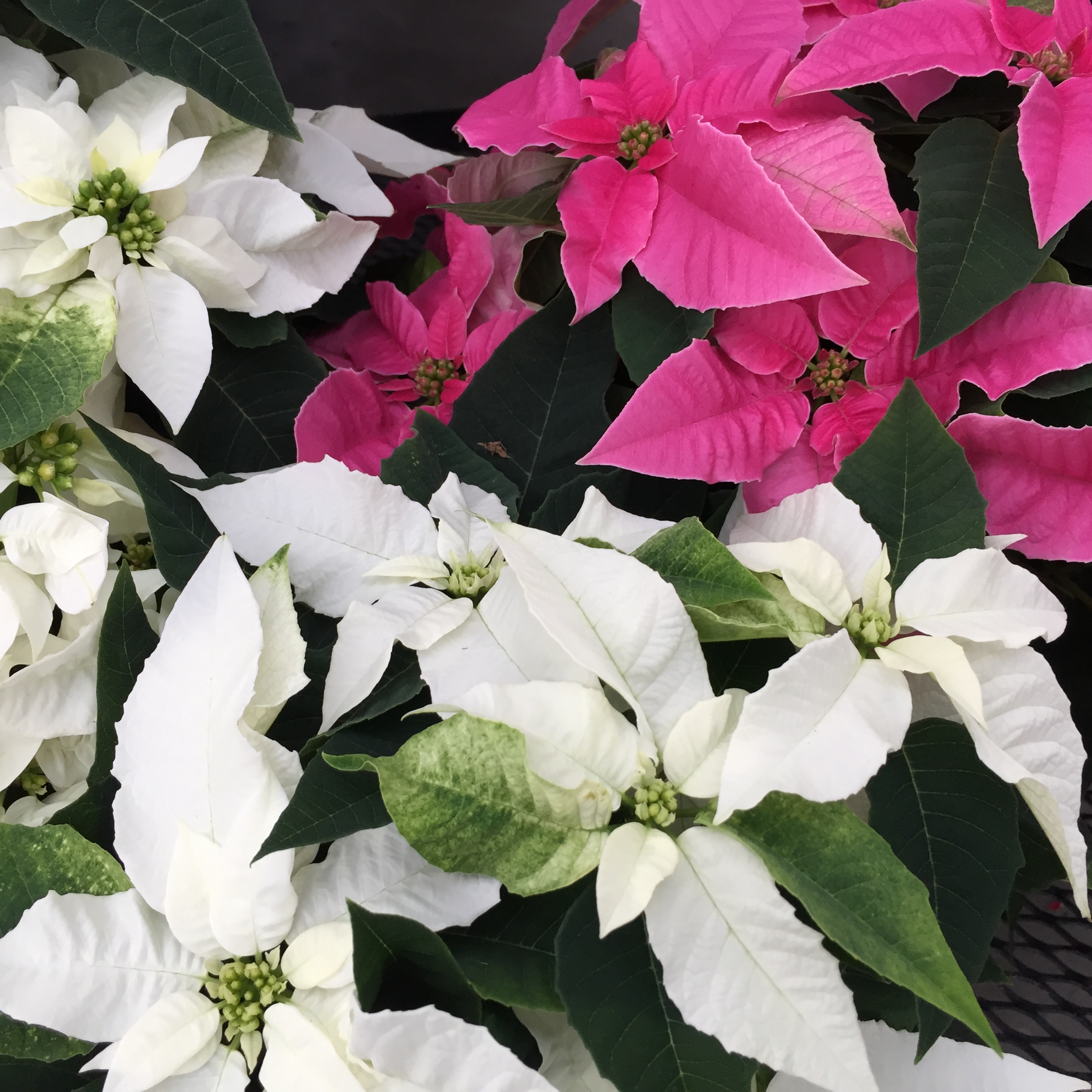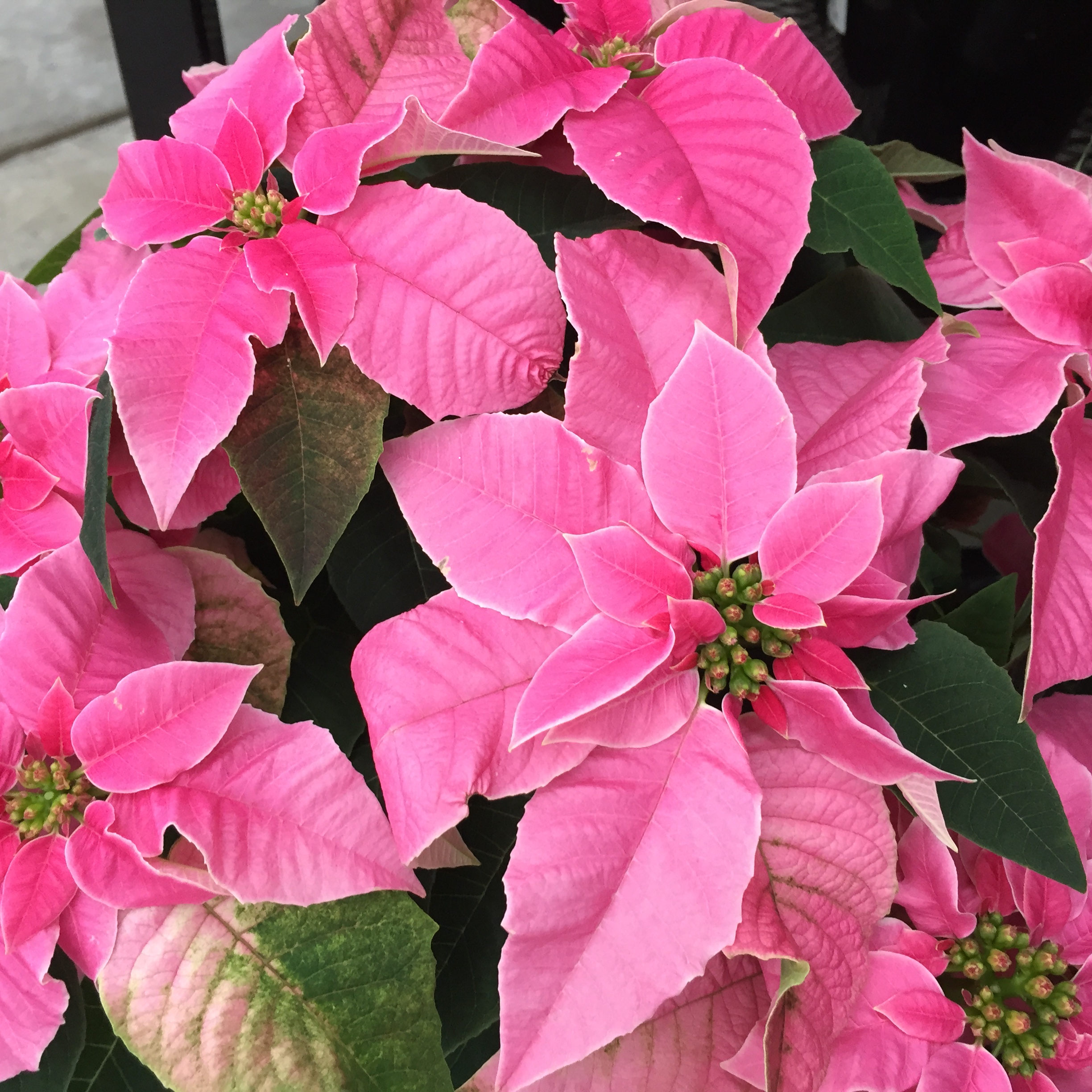Few plants signal that the holidays are here quite like the poinsettia. These colorful plants have a lot going for them with lush foliage that offers instant festive holiday ambiance. Whether you opt for a traditional style or take home a new variety that boasts dramatic colors and patterns, each plant has its own cheerful flair. Keep reading to learn more about why our poinsettias are top-quality, and how you can keep them looking healthy and beautiful at home.
Fun Fact: What we think of as poinsettia flowers are actually modified leaves called bracts. The actual flowers are tiny and yellow at the center of the plant.
Our poinsettias aren’t the kind you’ll find just anywhere. The growers that provide our poinsettias have been in business almost as long as we have (90+ years!), and they put a lot of love and labor into growing the most beautiful florist-quality plants. That means the poinsettias were given more space while they were growing, providing each plant with more light to grow lush and dense, with more bracts per plant to give you more flowers.
Poinsettias are native to tropical areas, so they’re really sensitive to our cooler temperatures. Even a little time in the cool air outdoors can be damaging. That’s why our Cashiers go above and beyond to protect your new plants on the way home with a sleeve that insulates the plants as they travel home with you.
Fun Fact: In the wild, the brightly-colored bracts attract pollinating insects to their tiny central flowers.
Here are a few tips to keep your poinsettias happy once they are in their new home:
Poinsettia Care
LIGHT
Maximum light during winter with at least 3 to 4 hours of direct sunlight daily.
WATER
Soil should be allowed to dry out just slightly between thorough waterings. Water should be at room temperature. Do not allow plants to sit in water.
TEMPERATURE
Keep your plant in a warm, draft-free position. Night temperatures of 60-65ºF and day temperatures of 68ºF or higher are ideal.
HUMIDITY
Mist leaves regularly or set pots on a saucer of gravel filled with water (make sure the bottom of the pot is sitting on the gravel above the water line and not in the water).
FERTILIZER
There is no need to fertilize during the (winter) flowering period.
PROBLEMS
Loss of leaves can be due to very low or very high temperatures, underwatering or overwatering. Poor lighting can also cause premature leaf drop. A few yellowing or dropping leaves when you first get the plant home is normal as it adapts to its new conditions.
HANDLING POINSETTIAS
Poinsettias are very fragile! Please take care when handling and transporting them. These plants belong to the Euphorbia family, whose members secrete a milky sap when broken, and this can cause contact dermatitis, so be careful when handling the plants and wash your hands if you come into contact with the sap. It is also advisable to keep poinsettias out of reach of pets and small children.
AFTERCARE
You can enjoy your poinsettias for the season and replace them with new plants next year or, with a little extra care and effort, you can keep your plant as a "houseplant" year-round. Continue watering regularly and in late spring (May), after flowering, cut back plants to 4 to 6 inches. Repot in fresh potting soil. Poinsettias can be placed outdoors after the danger of frost has passed in spring, but be sure protect them from the hot summer sun by keeping them in shade to part shade. Water your plants frequently during the summer months and fertilize every two weeks with a regular fertilizer. Pinch off new tips until mid-August, leaving leave 4 to 5 strong stems to grow.
COLOR NEXT CHRISTMAS
Light control begins when outdoor night temperatures dip below 60ºF. Move your poinsettia indoors in September. Provide bright light indoors for 8 to 11 hours daily and provide complete uninterrupted darkness for 13 to 16 hours daily until mid-November or December, at which time the bracts should show color. Poinsettias need at least 40 of these "short days" to initiate flowering. Make sure temperatures and light control are carefully monitored.
Questions? Visit us, comment here, or reach out to us anytime on Instagram, Twitter, or Facebook with #heyswansons. We’re here to help!
We wish you happy holidays and thriving poinsettias!


